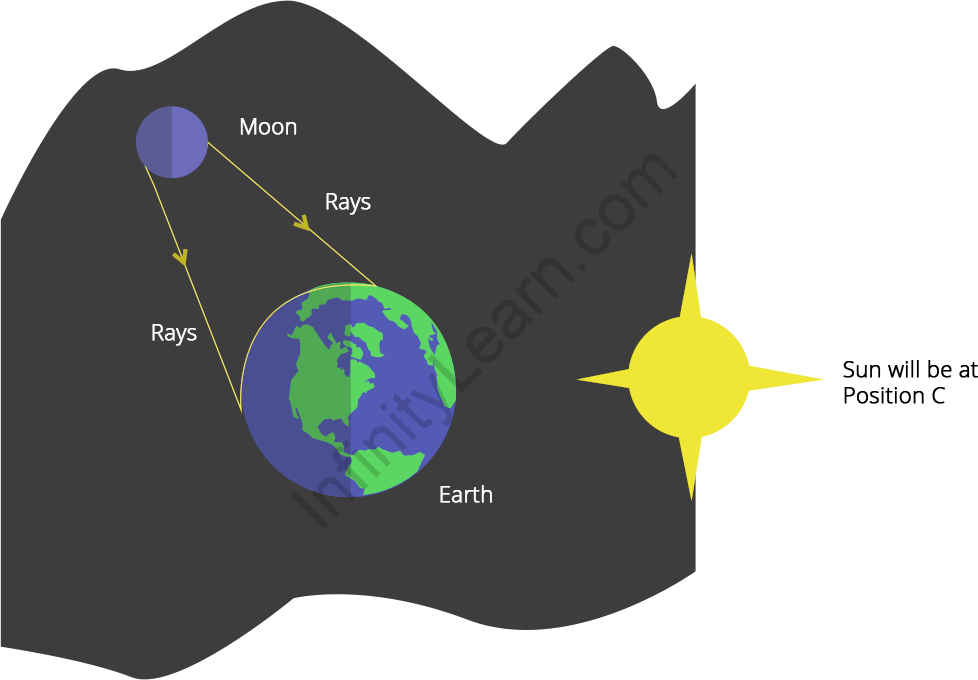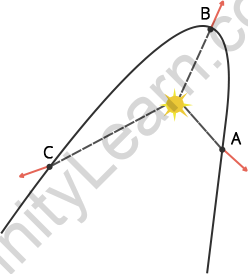Table of Contents
Infinity Learn offers free downloads of NCERT Exemplar Solutions Class 8 Science Chapter 17. Once downloaded, these solutions become a student’s always-accessible resource, even if internet access is not available. Our NCERT Exemplar Solutions for Class 8 Science are written by academic specialists with extensive experience in the academic field. These NCERT Exemplar Solutions for Class 8 are available for download on our website and in our app. NCERT Exemplar Solutions for Class 8 Science are available for all chapters and serve as a quick reference for students who desire to improve their test or exam scores.
Infinity Learn is a website that offers students free CBSE Solutions (NCERT) and other study materials. Maths Students who are looking for better solutions can download Class 8 Maths NCERT Exemplar Solutions to help them revise the entire syllabus and get better grades in their exams.
NCERT Exemplar Solutions Class 8 Science Chapter 17 Stars and Solar System
Multiple Choice Questions
- Morning star is the name given to
(a) Pole star
(b) Star Sirius
(c) Planet Jupiter
(d) Planet Venus
Ans: (d) Morning star refers to Venus, which rises before the sun in the east.
- Which of the following figures depicts the position of pole star correctly?

Ans: (a) Pole star is located on the north pole of the Earth’s axis.
- Sun appears to move from east to west around the earth. This means that earth rotates from
(a) East to west
(b) West to east
(c) North to south
(d) West to north
Ans: (b) The sun appears to move from east to west around the Earth because the Earth rotates from west to east.
- An astronaut standing on the surface of the moon throws a ball upwards. The ball would
(a) Directly fall down from the point it is released.
(b) Hang in space.
(c) Go up and then come back to the surface of the moon.
(d) Keep going up never to come back.
Ans: (c) An astronaut on the moon would throw a ball upwards, and it would go up and then come back to the surface of the moon due to the low gravitational force.
- Suppose a new planet is discovered between Uranus and Neptune.
Its time period would be
(a) Less than that of Neptune.
(b) More than that of Neptune.
(c) Equal to that of Neptune or Uranus.
(d) Less than that of Uranus.
Ans: (a)
If a new planet is discovered between Uranus and Neptune, its time period would be less than that of Neptune.
- The change in seasons on the earth occurs because
(a) The distance between the earth and the sun is not constant.
(b) The axis of rotation of the earth is parallel to the plane of its orbit.
(c) The axis of rotation of the earth is perpendicular to the plane of its orbit.
(d) The axis of rotation of the earth is tilted with respect to the plane of its orbit.
Ans: (d) The change in seasons on Earth occurs because the axis of rotation of the Earth is tilted with respect to the plane of its orbit.
- The first day of the month is the new moon day. On fifteenth of the same month, which of the following figures would represent the phase of the moon?

Ans: (a) On the fifteenth day of the same month, the new moon day is full moon day, and the moon phase would be represented by a full circle.
Very Short Answer Questions
- Do stars emit light only during night?
Ans: Stars emit light throughout the day, but their light is obscured by the sun’s brilliance.
- Paheli and Boojho observe a bright object in the night sky which was not twinkling. Paheli says it is a star and Boojho says it is a planet. Who is correct?
Ans: Paheli is wrong, and Boojho is right because planets do not twinkle, and stars always emit their light and twinkle.
- State whether the following statements are ‘True’ or ‘False’.
(a) The planet nearest to us is Jupiter.
Ans: False, Venus and Mars are the planets nearest to Earth.
(b) All the stars are at the same distance from us.
Ans: False, different stars are at different distances from us.
(c) The planets do not emit light of their own.
Ans: True, planets do not emit light of their own.
(d) The planets keep changing their position with respect to stars.
Ans: True, the planets change their position with respect to stars.
(e) The planet Venus appears in the eastern sky before sunrise.
Ans: True, Venus appears in the eastern sky before sunrise.
(f) The plane in which the earth revolves around the sun is called the equatorial plane of earth.
Ans: False, Earth revolves around the sun in a plane orbit, not the equatorial plane of Earth.
- John saw the full moon on a particular day. After how many days will he be able to see the full moon again?
Ans: John will be able to see the full moon again approximately after 29 days.
- In the picture of rotating earth given as Fig. 17.3 mark the position of the pole star.

Ans: The position of the pole star is at the top of the rotating Earth.

- In the given Fig. 17.4 out of the positions A,B,C and D which will indicate the position of the sun? Draw the sun at the appropriate position.

Ans: The position of the sun in Fig. 17.4 is at position D.

- In Fig. 17.5 mark the arrows (←), (→), (↓), or (↑) to show the direction of sunlight.
Ans: The direction of sunlight in Fig. 17.5 is from right to left.

| More Resources – NCERT Solutions for Class 8 | |
| NCERT Solutions for Class 8 Science | NCERT Solutions for Class 8 Social Science |
| NCERT Solutions for Class 8 English | NCERT Solutions for Class 8 Maths |
Short Answer Questions
- A star is ten light-years away from the earth. Suppose it brightens up suddenly today. After how much time shall we see this change?
Ans: If a star is ten light-years away and brightens up today, we will see this change after 10 years, as the distance travelled by light in a year is measured in light-years.
- Meteors are not visible during the daytime. Explain the reason.
Ans: Meteors are not visible during the daytime because of the brightness of the sun. They are only visible at night as they glow upon entering the Earth’s atmosphere.
- Why does the moon change its shape daily?
Ans: The moon changes its shape daily because only a certain portion of the moon is enlightened by the Sun, and the enlightened portion is visible from Earth, making it appear as if the moon is changing its shape.
- Paheli saw the moon through a glass window at 8:00 p.m. She marked the position of the moon on the glass pane. She got up at 4 a.m. in morning. Will the moon be visible at the same position?
Ans: Paheli will not be able to locate the moon at 4 a.m. in the morning where she had located it earlier because the moon travels a certain distance around the Earth as it revolves, just like the Earth rotates on its axis and revolves around the Sun.
Long Answer Questions
- Suppose the moon emits light of its own. Would it still have phases? Justify your answer.
Ans: If the moon had its own emitting light, there would not be any phases, and it would be visible just like the Sun.
- Fig. 17.6 shows comets without their tails. Show the tails of the comets at positions A, B, and C. In which position will the tail be longest?
Ans: The tail of the comet will be longest at position B as it is the closest point from the sun. The comet’s tail is observable only when it goes by the inner orbit of the solar system.

- Explain why we always see the same side of the moon.
Ans: We always see the same side of the moon because the Moon is revolving around the Earth, and at a time, only a portion of the moon is enlightened by the Sun, which is visible from Earth.
- Look at Fig. 17.7 carefully and answer the following question:

(a) In which part of the sky would you see the full moon in the evening?
Ans: In the evening, the full moon shines brightly in the eastern sky.
(b) In which part of the sky would you see the crescent moon in the evening?
Ans: In the evening, the crescent moon (which is shaped like a sickle) is visible in the western sky.
- Write the names of all planets in Fig. 17.8.
Ans: The names of the planets in Fig. 17.8 are Mercury, Venus, Earth, Mars, Jupiter, Saturn, Uranus, and Neptune.
- Suppose the distance between earth and sun becomes half of its present distance. What is likely to happen to life?
Ans: If the distance between the Earth and the Sun becomes half of its present distance, life on Earth would be unlikely to survive, as the Earth would heat up quickly, water may dry up, and vegetation would be destroyed.
- Explain with a diagram how you can locate a pole star with the help of the constellation Great Bear (Ursa Major).
Ans: To locate the Pole Star with the help of the constellation Great Bear (Ursa Major), locate two stars of the constellation and draw an imaginary line between them. Extend this imaginary line towards the north direction, which will eventually bring us to the less brightened star, known as the Pole Star.

Why is it important to use NCERT Exemplar Solutions for Class 8 Science Chapter 17?
- Students may learn more about the chapter in less time by using our NCERT Exemplar Solutions Class 8 as a resource.
- These solutions also aid in the development of exam strategies for students.
- Here you may read Chapter 17 of the NCERT Science Book for Class 8 and find useful links.
- Our specialists develop these NCERT Exemplar Solutions in a highly simplified way that is easily understood by students.
- Students can rely on these NCERT answers without worry because NCERT textbooks are used to answer the majority of questions on the CBSE test.
Class 8 Science Chapter 17 Stars and Solar System FAQs
Is Infinity Learn providing Solutions for Class 8 Science Chapter 17?
Yes, the Infinity Learn website comes with accurate and detailed solutions for all questions provided in the NCERT Textbook. Infinity Learn brings you NCERT Exemplar Solutions for Class 8 Science, made by our subject matter experts for a smooth and easy understanding of concepts. These solutions come with detailed step-by-step explanations of problems given in the NCERT Textbook. The NCERT Exemplar Solutions of this chapter can be downloaded in the form of a PDF and it can be used as a quick revision tool.
What are the Benefits of Downloading Infinity Learn’s Class 8 Science Chapter 17 Solution?
There are numerous advantages to obtaining Infinity Learn’s NCERT Exemplar Solutions for class 8 science Chapter 17 pdf. If you want to learn more about those advantages, see the list of advantages for downloading class 8th science chapter 17 solutions below: Students can sign up for live online classes. Students can memorize all of the answers in order to improve their final science exam scores. All of the responses are 100 percent accurate and dependable. The most brilliant and experienced subject matter experts in India write the answers. Students can access academic help 24 hours a day, seven days a week.
Why Opt for Infinity Learn?
In this chapter, Infinity Learn provides videos, notes, NCERT textbook solutions, other practice book solutions, and assignments that help you learn the concepts and to memorize the concepts for entrance exams and board exams. Most important, Infinity Learn to provides instant doubt support by subject experts.








